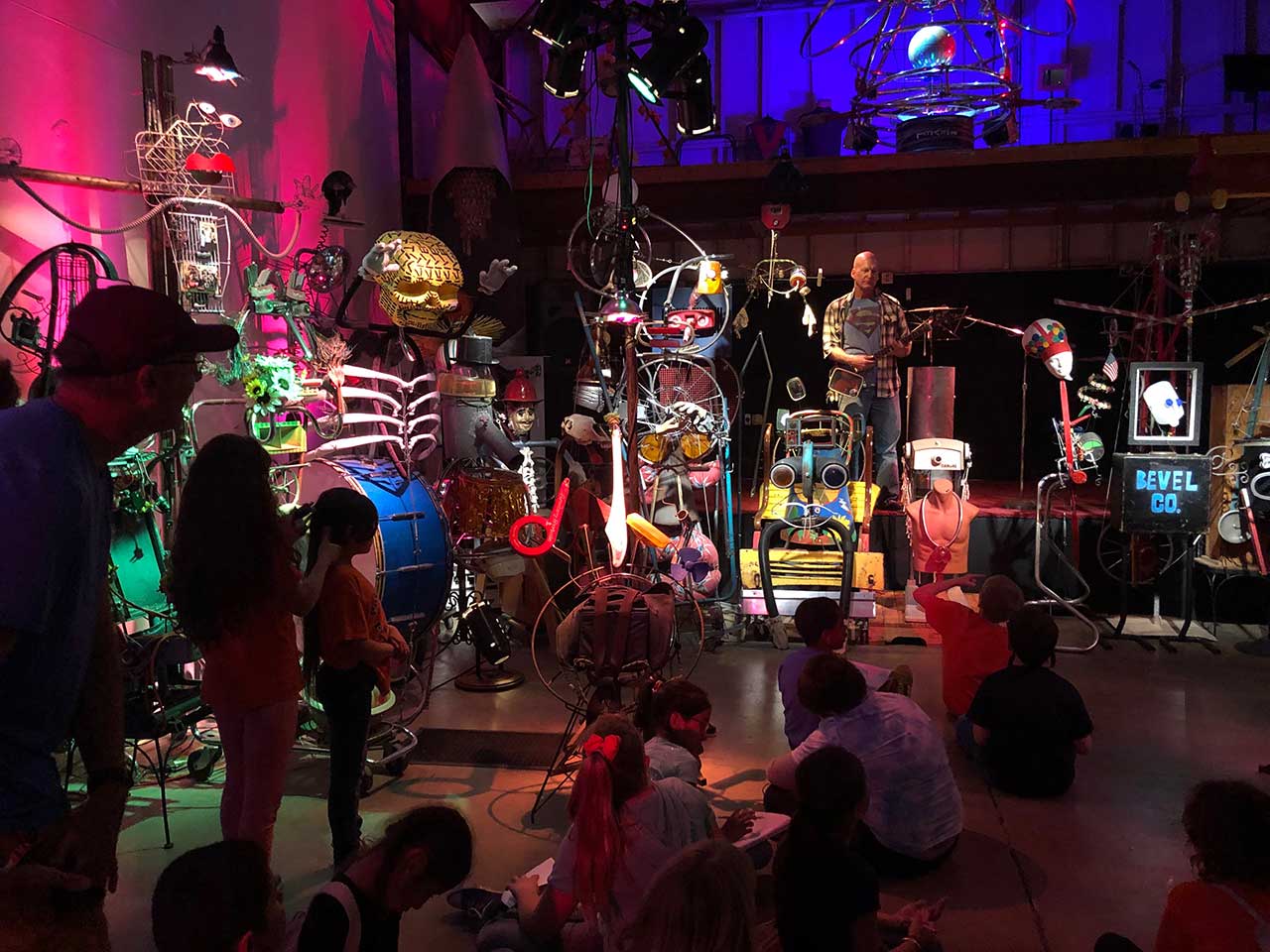See Shapes in the Sculpture
Time: 60 minutes
Materials: Lesson 4 video (when completed); One recycled box for each student and three “cardboard dumpsters” with recycled cardboard strips plus glue and masking tape; markers; 2D geometric shapes handout; The Daily Doodle digital notebooks.
Overview:
Students learn about systems an d their component parts.
They discuss different kinds of man-man and natural systems such as social, biological, computer and mechanical. They identify parts of systems and discuss the role that the various parts play in creating a strong and well operating system.
To understand how to build a unique system, students will make a unique sculpture out of objects they’ve found and collected from house, the yard and community. Before starting, they learn about an intuitive technique to help them see possibilities in which they can rotate, turn and flip the individual parts to see how they look from different angles.
Students are encouraged to take on the role of role of systems engineers thinking about how pieces might naturally fit together with another part in order to build a naturally strong sculpture. They receive the day’s assignment which is to inventory their found objects, record their attributes, then explore with their hands how the pieces might fit together to create something new, like a creature, or a tool or a vehicle. Students share what they’ve constructed, pointing out unique features and the various shapes and parts that make up the sculpture. They share difficulties they encountered and how they solved the engineering problem.
Assignments:
- As a group, students brainstorm and discuss examples of systems in their worlds.
- As a group, referencing their examples of systems, students identify the various parts that make up these systems.
- As a group, students learn intuitive techniques to make a naturally strong sculpture from found objects.
- Individually, students make a found object sculpture from the items they’ve harvested.
- As a group, students share what they’ve made pointing out what the whole sculpture looks like, and what parts and shapes make up the whole.
Downloads:
2D Shapes List Handout
Instructor Protocol
Homework:
Students are asked to continue noticing all the shapes in buildings and in nature, and what their roles are.

By the end of this lesson, students should be able to:
-Construct ideas of how shapes can be used in a sculpture
-Combine individual shapes to create a new shape
-Form connections between found objects and parts of a system
-Form connections between geometry and functions
-Identify and categorize shapes within a system
This lesson meets the following Arizona State Standards:
-VisualArts.Create.2.3a, 2.4a, 2.5a (Create artwork using a variety of artistic processes, materials, and approaches)
-Math.Geometry.3.A.1, 4.A.1, 5.A.1 (Reason with shapes and their attributes and classify shapes by properties)
-ScienceEngineeringStatements.CCC4: SystemsAndSystemModels.3-5 (A system can be described in terms of its components and their interactions)
-ScienceEngineeringPractices.Ask Questions and Define Problems.3-5 (Ask questions based on careful observations of phenomena and information)
All Contents for The Universe Within © 2020 Mat Bevel Company, Patagonia Public Schools and University of Arizona School of Mathematical Sciences.